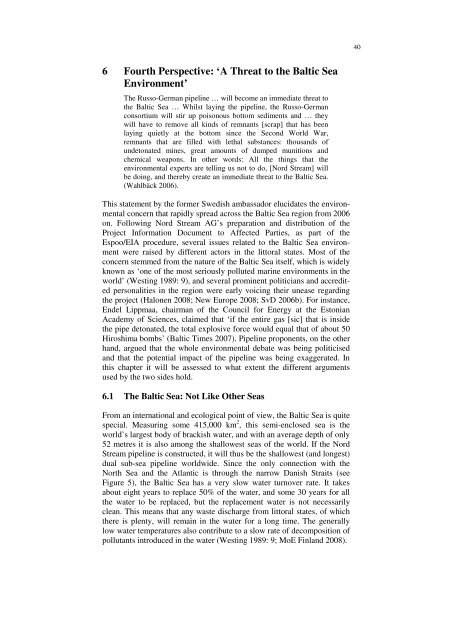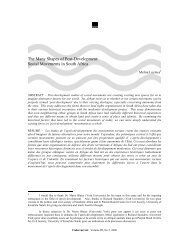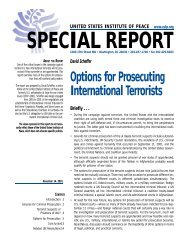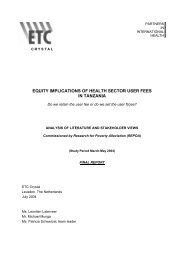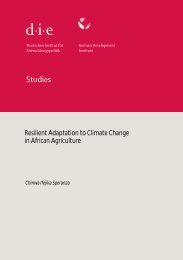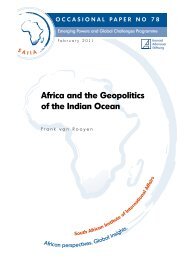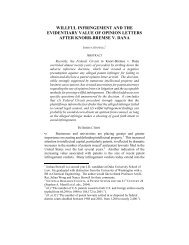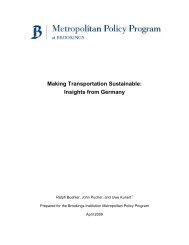Nord Stream: Not Just a Pipeline
Nord Stream: Not Just a Pipeline
Nord Stream: Not Just a Pipeline
You also want an ePaper? Increase the reach of your titles
YUMPU automatically turns print PDFs into web optimized ePapers that Google loves.
6 Fourth Perspective: ‘A Threat to the Baltic Sea<br />
Environment’<br />
The Russo-German pipeline … will become an immediate threat to<br />
the Baltic Sea … Whilst laying the pipeline, the Russo-German<br />
consortium will stir up poisonous bottom sediments and … they<br />
will have to remove all kinds of remnants [scrap] that has been<br />
laying quietly at the bottom since the Second World War,<br />
remnants that are filled with lethal substances: thousands of<br />
undetonated mines, great amounts of dumped munitions and<br />
chemical weapons. In other words: All the things that the<br />
environmental experts are telling us not to do, [<strong>Nord</strong> <strong>Stream</strong>] will<br />
be doing, and thereby create an immediate threat to the Baltic Sea.<br />
(Wahlbäck 2006).<br />
This statement by the former Swedish ambassador elucidates the environmental<br />
concern that rapidly spread across the Baltic Sea region from 2006<br />
on. Following <strong>Nord</strong> <strong>Stream</strong> AG’s preparation and distribution of the<br />
Project Information Document to Affected Parties, as part of the<br />
Espoo/EIA procedure, several issues related to the Baltic Sea environment<br />
were raised by different actors in the littoral states. Most of the<br />
concern stemmed from the nature of the Baltic Sea itself, which is widely<br />
known as ‘one of the most seriously polluted marine environments in the<br />
world’ (Westing 1989: 9), and several prominent politicians and accredited<br />
personalities in the region were early voicing their unease regarding<br />
the project (Halonen 2008; New Europe 2008; SvD 2006b). For instance,<br />
Endel Lippmaa, chairman of the Council for Energy at the Estonian<br />
Academy of Sciences, claimed that ‘if the entire gas [sic] that is inside<br />
the pipe detonated, the total explosive force would equal that of about 50<br />
Hiroshima bombs’ (Baltic Times 2007). <strong>Pipeline</strong> proponents, on the other<br />
hand, argued that the whole environmental debate was being politicised<br />
and that the potential impact of the pipeline was being exaggerated. In<br />
this chapter it will be assessed to what extent the different arguments<br />
used by the two sides hold.<br />
6.1 The Baltic Sea: <strong>Not</strong> Like Other Seas<br />
From an international and ecological point of view, the Baltic Sea is quite<br />
special. Measuring some 415,000 km 2 , this semi-enclosed sea is the<br />
world’s largest body of brackish water, and with an average depth of only<br />
52 metres it is also among the shallowest seas of the world. If the <strong>Nord</strong><br />
<strong>Stream</strong> pipeline is constructed, it will thus be the shallowest (and longest)<br />
dual sub-sea pipeline worldwide. Since the only connection with the<br />
North Sea and the Atlantic is through the narrow Danish Straits (see<br />
Figure 5), the Baltic Sea has a very slow water turnover rate. It takes<br />
about eight years to replace 50% of the water, and some 30 years for all<br />
the water to be replaced, but the replacement water is not necessarily<br />
clean. This means that any waste discharge from littoral states, of which<br />
there is plenty, will remain in the water for a long time. The generally<br />
low water temperatures also contribute to a slow rate of decomposition of<br />
pollutants introduced in the water (Westing 1989: 9; MoE Finland 2008).<br />
40


